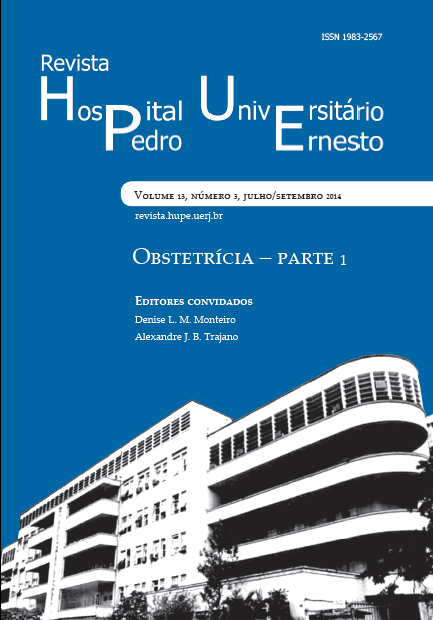Gestational trophoblastic disease – Update
DOI:
https://doi.org/10.12957/rhupe.2014.12124Abstract
Gestational trophoblastic disease is disorder of pregnancy that encompasses clinical benign forms (complete and partial hydatidiform mole) and malignant forms (invasive mole, choriocarcinoma, placental site trophoblastic tumor and epithelioid trophoblastic tumor). Its most common form, hydatidiform mole, affects 1:200 pregnant in Brazil. In the past it was common for a patient with hydatidiform mole present exuberant symptoms: copious bleeding, theca lutein cysts of the ovary, enlarged uterus for gestational age, early preeclampsia, hyperemesis and hyperthyroidism. Nowadays, with early diagnosis made by ultrasound, many patients are still diagnosed asymptomatic. However, this situation has hindered early diagnosis histopathological analysis of molecular material, making immunohistochemistry and molecular biology major in the diagnostic. For its potential to develop into gestational trophoblastic neoplasia, patients affected by molar pregnancy should be followed in the Reference Centers, where they are initially subjected to uterine vacuum aspiration technique. In these specialized services they have also monitored levels of human chorionic gonadotropin in order to early detect residual disease and its malignant progression. It is noteworthy that the rigorous use of hormonal contraception is critical to maintain reliable tumor marker for this disease. It is expected that about 20 % of patients with hydatidiform mole progress to gestational trophoblastic neoplasia whose chemotherapy can cure the majority of patients, preserving reproductive capacity which, generally, does not affected. The purpose of this paper is to review clinical, genetic, pathological and therapeutic aspects of gestational trophoblastic disease, a major cause of hemorrhage of pregnancy.Downloads
Published
2014-07-29
Issue
Section
Artigos


